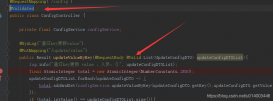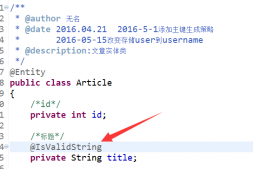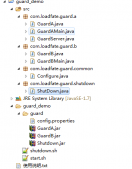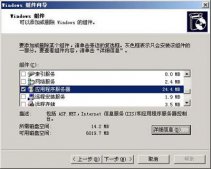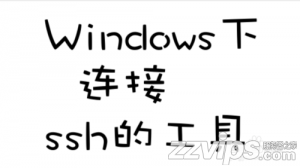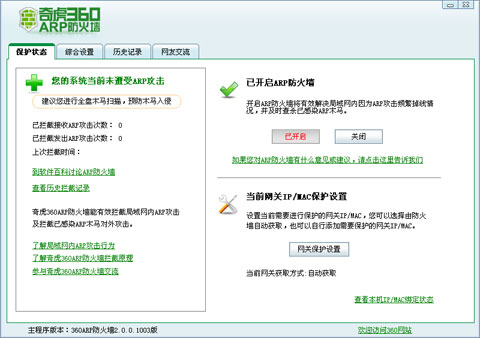annotation就是注解的意思,在我們使用的攔截器時,可以通過業(yè)務(wù)層添加的某個注解,對業(yè)務(wù)方法進(jìn)行攔截,之前我們在進(jìn)行統(tǒng)一方法攔截時使用的是execution,而注解的攔截我們使用@annotation即可,我們可以做個例子,比如搞個防止重復(fù)提交的注解,然后在攔截器里去寫防止重復(fù)提交的邏輯就好了。
攔截器數(shù)據(jù)源
|
1
2
3
4
5
6
7
8
9
10
11
12
13
14
15
16
17
18
19
20
21
22
23
|
/** * 防止重復(fù)提交 * * @author BD-PC220 */@Documented@Retention(RetentionPolicy.RUNTIME)@Target({ElementType.METHOD})public @interface RepeatSubmit { /** * 間隔多長時間提交,默認(rèn)1秒 * * @return */ long time() default 1; /** * 作為驗證重復(fù)提交的key, * * @return */ String key();} |
業(yè)務(wù)實現(xiàn)的攔截器代碼
|
1
2
3
4
5
6
7
8
9
10
11
12
13
14
15
|
/** * URL重復(fù)提交攔截器. */@Slf4j@Component@Aspectpublic class RepeatSubmitAspect { @Autowired StringRedisTemplate redisTemplate; @Around("@annotation(repeatSubmit)") public Object around(ProceedingJoinPoint proceedingJoinPoint, RepeatSubmit repeatSubmit) throws Throwable { log.info("repeatSubmit={}", repeatSubmit.toString()); }} |
在單元測試?yán)锶ソI(yè)務(wù)方法,然后建立單元測試的方法等
|
1
2
3
4
5
6
7
|
@Componentpublic class RepeatSubmitController { @RepeatSubmit(key = "get") public String get() { return "success"; }} |
測試代碼
|
1
2
3
4
5
6
7
8
9
10
11
12
|
@RunWith(SpringRunner.class)@SpringBootTest()@Slf4jpublic class RepeatSubmitTest { @Autowired RepeatSubmitController repeatSubmitController; @Test public void test() { log.info(repeatSubmitController.get()); }} |

到此這篇關(guān)于springboot aspect通過@annotation進(jìn)行攔截的文章就介紹到這了,更多相關(guān)springboot aspect通過@annotation攔截內(nèi)容請搜索服務(wù)器之家以前的文章或繼續(xù)瀏覽下面的相關(guān)文章希望大家以后多多支持服務(wù)器之家!
原文鏈接:https://www.cnblogs.com/lori/archive/2020/08/19/13528403.html



